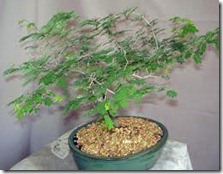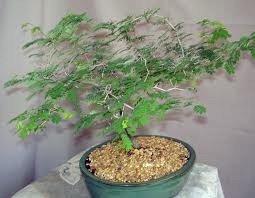 If you learn to prune bonsai at the right time of year you will be able to create compact shape and a more refined tree.
If you learn to prune bonsai at the right time of year you will be able to create compact shape and a more refined tree.
There is an art to it, and it is usually the first big step for the beginner.
There are several times a year you can prune your bonsai successfully depending on at what stage of creation your tree is in.
If your tree is in the early stages of development and you are still trying to thicken the trunk, train to a certain style or trying to encourage branching to fill in, or complete a particular style then you will probably let your tree grow unpruned for one or more growing seasons, only removing growth that is un-wanted for your final shape.
If your bonsai has its general shape and you are now refining the tree, then several times a year you will most probably go through this process. Early Spring, end of Spring to early Summer and possibly Autumn depending on the zone you live in.
In the Spring when you are about to root prune and re-pot your tree is one of the times that it is recommended to prune the foliage of your tree to compensate for the amount of root s you will prune before re potting. This helps to eliminate die back of foliage or branches due to the lack of roots now available to supply nutrients to them.
Most trees are usually dormant over the winter before the spring, so finding a lot of growth to prune may be difficult, so just a light prune of the foliage to maintain the trees shape may be all that can be done at this time.
Several months after re-potting, your tree should be flush with strong new growth and this is the ideal time to prune your tree to refine its shape and the overall quality of the tree and the chance to hopefully rectify any styling problems.
Start by viewing you bonsai from as many angles as you can to be certain of the style you wish to continue growing this tree in, remember sometimes just the change of angle to one side or the other may change or improve the overall appearance or style of a tree.
When it comes to figs, I always start by trimming the foliage back to one pair of leaves wherever possible (different varieties may need to be dealt with differently).
Work your way around the tree from different angles and wherever obvious growth is unwanted e.g. Growing directly down from a branch or straight up, foliage pointing directly to the front that is not at least ¾ of the way up the tree and so on.
Keep working around the tree till most or all of this foliage has been removed.
Now view the bonsai from eye level to see that the overall pattern for the particular style you have chosen is emerging. This is when you can see if the trunk branches, branchlets need to be wired in place to improve the tree. Also view your bonsai from directly above to see if the branches form a spokes type pattern, similar to the spokes on a bike tyre.
This is now when you can move on to wiring your tree.
Remember, with pruning sometimes you have to be cruel to be kind. Cutting your tree back harsh now while it is in its main growth season will usually reap the rewards of a much more refined bonsai quicker than if you are too delicate with your pruning.
If your tree is already well shaped and you are only trying to keep it in shape during the growing season then it is best to pinch out any tips growing too long and rub off any growth that starts to appear on the trunk or along the branches that is unwanted.
Pinch out any leaves that get to big and this will also help reduce the leaf size of the new leaves. Some varieties can be completely leaf pruned and this will encourage a flush of new foliage growth usually smaller than the previous growth.
Whichever method of pruning you use this should help to create compact pads of foliage and help your bonsai tidy and healthy.
The art of pruning bonsai well can sometimes take years to grasp well. By examining many other bonsai, or taking a bonsai course you will be able to create beautiful bonsai in much less time!

Deprecated: strpos(): Passing null to parameter #1 ($haystack) of type string is deprecated in /home/agriviek8Qv/agriviet.net/public_html/wp-includes/comment-template.php on line 2522